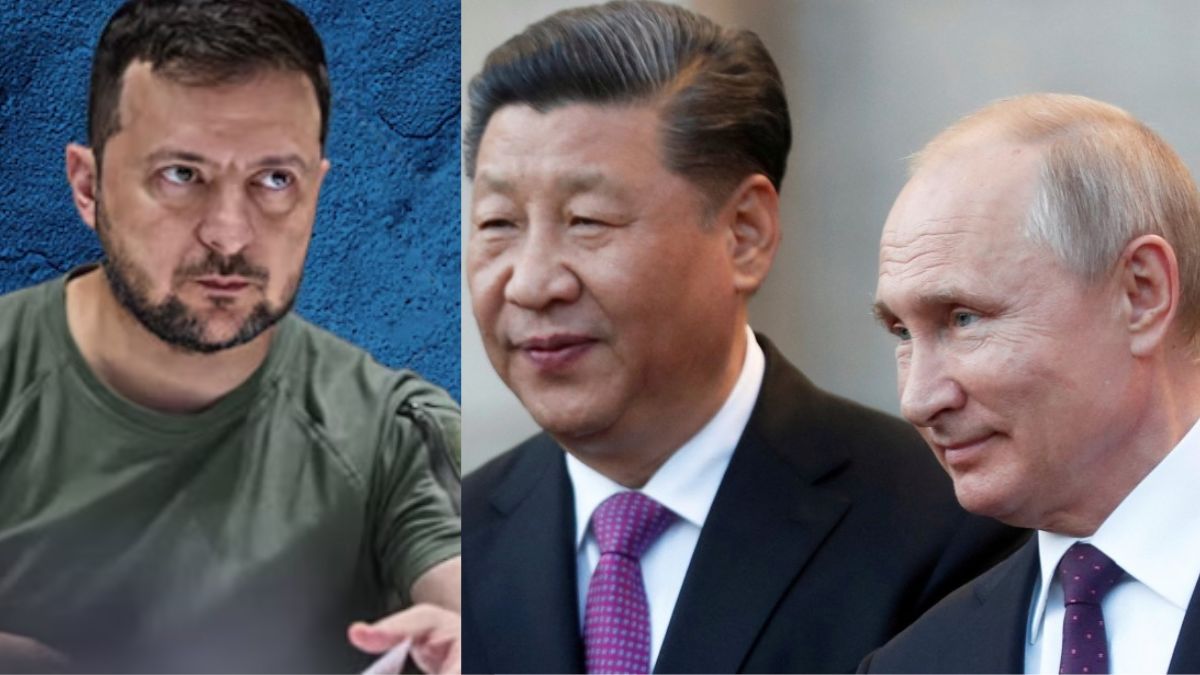Chinese Foreign Minister Wang Yi arrived in Moscow on Monday for talks with his Russian counterpart Sergei Lavrov as Russia and Ukraine discuss US President Donald Trump’s proposal to end the three-year war.
Wang is set to meet Lavrov on Tuesday days after Kyiv and Moscow agreed in principle to a limited ceasefire following Trump’s discussions with both sides. The details of the truce, including its timeline, duration and scope, remain unclear.
Chinese Foreign Ministry spokesperson, Guo Jiakun reiterated Beijing’s neutral stance on the conflict, stating, “We always believe that dialogue and negotiation are the only viable way out of the crisis. China’s cooperation with Russia does not target a third party and should not be affected by any third party.”
China did not mention Ukraine in its official announcement of Wang’s visit, instead emphasising efforts to “deepen back-to-back strategic coordination” with Russia and expand cooperation across multiple sectors. A Foreign Ministry statement said Beijing is prepared to work with Moscow on “international and regional issues of common concern.”
China has provided strong diplomatic support for Russia in the more than three years since it launched a full-scale invasion of its neighbor, along with an economic lifeline through the trade in energy and consumer goods. However, it has not knowingly provided Russia with weapons or military expertise and has put forward a vague peace plan that was swiftly dismissed by most observers.
Trump said on Sunday he was “pissed off” at Russian President Vladimir Putin and will impose secondary tariffs of 25% to 50% on buyers of Russian oil if he feels Moscow is blocking his efforts to end the war in Ukraine.
Impact Shorts
More ShortsTrump told NBC News he was very angry after Putin last week criticized the credibility of Ukrainian President Volodymyr Zelenskiy’s leadership, the television network reported, citing a telephone interview early on Sunday.
Since taking office in January, Trump has adopted a more conciliatory stance towards Russia that has left Western allies wary as he tries to broker an end to Moscow’s three-year-old war in Ukraine.
His sharp comments about Putin on Sunday reflect his growing frustration about the lack of movement on a ceasefire.
“If Russia and I are unable to make a deal on stopping the bloodshed in Ukraine, and if I think it was Russia’s fault … I am going to put secondary tariffs on oil, on all oil coming out of Russia,” Trump said.
“That would be, that if you buy oil from Russia, you can’t do business in the United States,” Trump said. “There will be a 25% tariff on all oil, a 25- to 50-point tariff on all oil.”
Trump later reiterated to reporters he was disappointed with Putin but added: “I think we are making progress, step by step.”
Trump said he could impose the new trade measures within a month.
There was no immediate reaction from Moscow. Russia has called numerous Western sanctions and restrictions “illegal” and designed for the West to take economic advantage in its rivalry with Russia.
Trump, who spent the weekend at his estate in Palm Beach, Florida, told NBC News he planned to speak with Putin this week. The two leaders have had two publicly announced telephone calls in recent months but may have had more contacts, the Kremlin said in video footage last week.
The White House had no immediate comment on when the call would take place, or if Trump would also speak with Zelenskiy.
Trump has focused heavily on ending what he calls a “ridiculous” war, which began when Russia invaded Ukraine in February 2022, but has made little progress.
Putin on Friday suggested Ukraine could be placed under a form of temporary administration to allow for new elections that could push out Zelenskiy.
Trump, who himself has called for new elections in Ukraine and denounced Zelenskiy as a dictator, said Putin knows he is angry with him. But Trump added he had “a very good relationship with him” and “the anger dissipates quickly … if he does the right thing.”
The U.S. has not imported any Russian barrels of crude oil since April 2022, according to U.S. government data. Before that, U.S. refiners bought inconsistent volumes of Russian oil, with a high of 98.1 million barrels in 2010 and low of 6.6 million in 2014, according to a review of EIA data since 2000.
India has surpassed China to become the biggest buyer of seaborne Russian crude, which comprised about 35% of India’s total crude imports in 2024.
Trump on Sunday also said he could hit buyers of Iranian oil with secondary sanctions if Tehran did not reach an agreement to end their nuclear weapons program.
With inputs from agencies
)